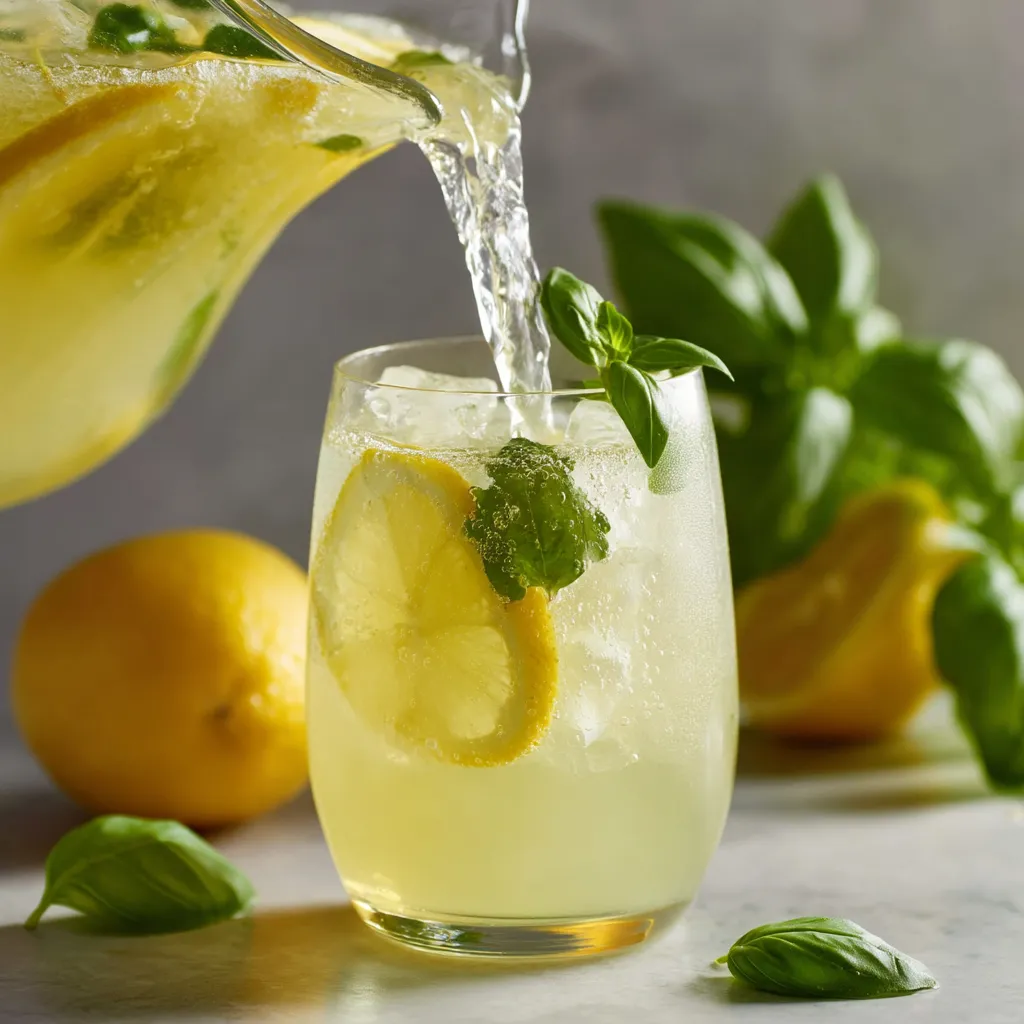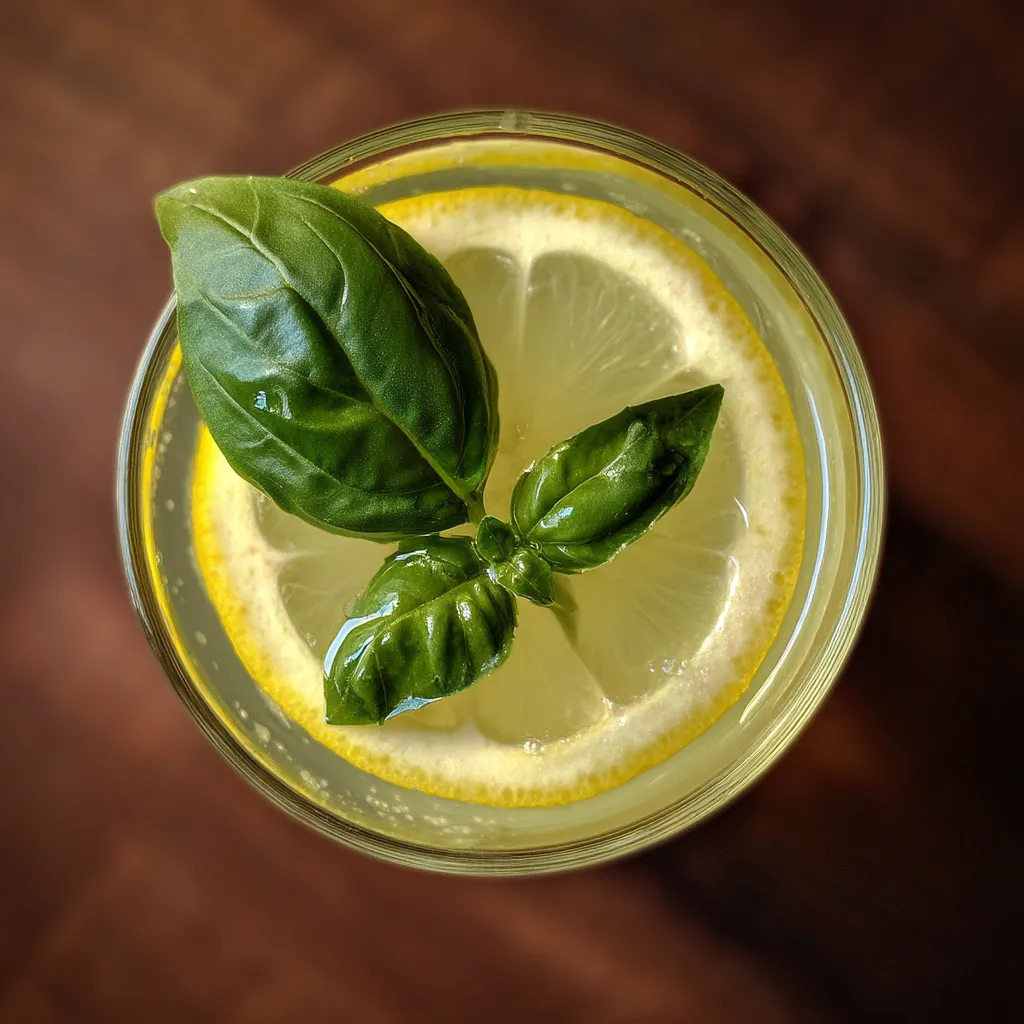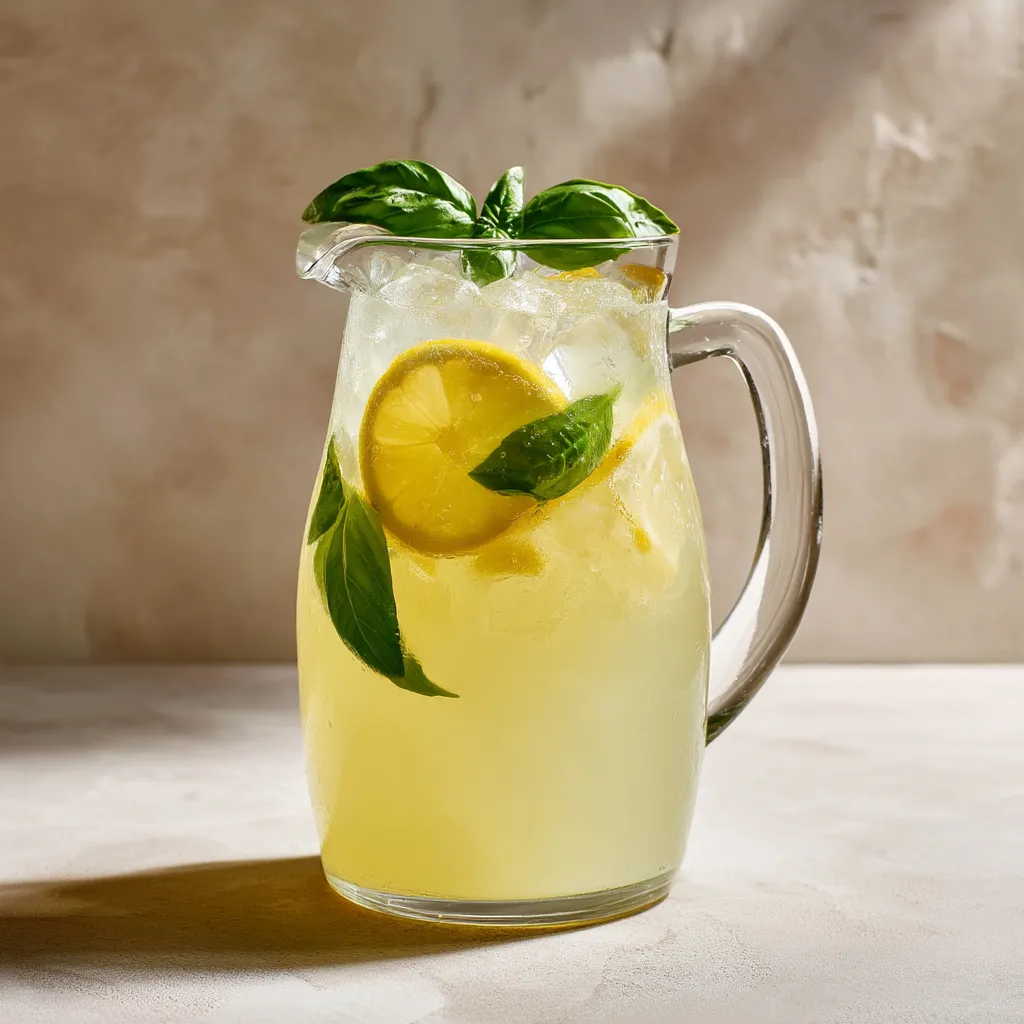 Save
Save
This refreshing basil lemonade transforms the ordinary into something extraordinary, adding aromatic herbs to the classic zippy lemon drink that cools you down on hot summer days. The herbaceous notes of fresh basil complement the bright acidity of lemons perfectly, creating a sophisticated yet simple beverage that will impress guests or elevate your everyday refreshment.
I first created this basil lemonade for a garden party last summer, and it became an instant hit. Now my neighbors request I bring a pitcher to every backyard gathering from June through September.
Ingredients
- Water: divided between syrup and final mixing, adds the perfect dilution while controlling sweetness
- Granulated sugar: creates a smooth syrup without graininess that dissolves completely
- Fresh basil leaves: provide the distinctive aromatic quality; use bright green leaves for best flavor
- Freshly squeezed lemon juice: is non-negotiable; bottled juice lacks the brightness of fresh
- Ice cubes: not just for chilling but for proper dilution as they melt
- Lemon slices and extra basil: make a beautiful presentation and enhance the aroma as you sip
Step-by-Step Instructions
- Create the Basil Syrup:
- Combine water and sugar in a small saucepan over medium heat. Stir continuously until the sugar completely dissolves, about 3 minutes. Watch carefully to prevent the mixture from boiling vigorously as this can reduce volume and potentially crystallize the sugar.
- Infuse the Basil:
- Remove the saucepan from heat immediately after sugar dissolves. Add fresh basil leaves, pushing them down with a spoon to fully submerge. Cover the pan and allow the mixture to steep for exactly 10 minutes. The heat will extract the essential oils from the basil, infusing the syrup with its aromatic compounds.
- Strain and Cool:
- Pour the mixture through a fine mesh strainer into a heat safe container, pressing gently on the basil leaves to extract maximum flavor. Allow the syrup to cool completely at room temperature, which typically takes 15 to 20 minutes. For faster cooling, place the container in an ice bath.
- Mix the Lemonade:
- Pour freshly squeezed lemon juice into a large pitcher, followed by cold water. Add the cooled basil syrup gradually, tasting as you go to achieve your preferred level of sweetness. Stir thoroughly to ensure even distribution of flavors.
- Chill and Serve:
- Refrigerate the lemonade for at least 30 minutes to allow flavors to meld completely. Serve in glasses filled with ice, and garnish each glass with a fresh lemon slice and a small sprig of basil for an elegant presentation and aromatic boost.

The fresh basil is truly the star ingredient in this recipe. I grow several varieties in my garden, but I find Genovese basil works best here with its perfect balance of sweetness and subtle peppery notes. My daughter helps pick the leaves every time we make this, and she calls it our "special green lemonade."
Perfect Basil Selection
Choosing the right basil makes a significant difference in this lemonade. Look for vibrant green leaves without any dark spots or yellowing. The leaves should be firm and aromatic when gently rubbed between your fingers. Thai basil can substitute in a pinch, offering a more licorice-like flavor profile that pairs surprisingly well with lemon. Basil is at its peak during summer months, making this the perfect seasonal beverage when herbs are abundant and at their most flavorful.
Clever Serving Ideas
Transform this refreshing beverage into a stunning party drink by freezing additional basil leaves and thin lemon slices in ice cubes. These decorative ice cubes not only keep your lemonade cold but also release more flavor as they melt. For an elegant presentation, serve in clear glass pitchers or mason jars with striped paper straws and fresh basil sprigs. The vibrant yellow and green colors create a visually appealing drink that tastes as good as it looks.

Storage and Make-Ahead Tips
The basil syrup can be prepared up to one week in advance when stored in an airtight container in the refrigerator. This makes spontaneous lemonade preparation much quicker. The complete lemonade mixture stays fresh for up to three days refrigerated, though the bright flavor is most vibrant within the first 24 hours. If storing premade lemonade, add fresh garnishes just before serving to maintain their appearance and aroma. The syrup can even be frozen in ice cube trays for quick single servings later.
Common Questions About Recipes
- → Can I make basil lemonade ahead of time?
Yes! You can prepare basil lemonade up to 2 days ahead. Store in an airtight container in the refrigerator. The basil flavor will intensify slightly over time. Add fresh garnishes just before serving for the best presentation.
- → What other herbs work well in this lemonade?
While basil creates a distinctive flavor, you can substitute or combine it with mint, rosemary, thyme, or lavender. Each herb will create a unique flavor profile while maintaining the refreshing quality of the drink.
- → How can I adjust the sweetness level?
The beauty of homemade lemonade is customization. For a sweeter drink, add more basil syrup. For a tangier version, use less syrup or add more fresh lemon juice. You can also create extra syrup to serve on the side so guests can adjust to their preference.
- → Can I use bottled lemon juice instead of fresh?
Fresh lemon juice provides the brightest, most vibrant flavor. Bottled lemon juice will work in a pinch, but the taste will be noticeably different and less complex. If using bottled, look for 100% pure lemon juice without additives.
- → How do I make the alcoholic version?
For an adult version, add 1-1.5 oz of vodka, gin, or white rum per serving. Vodka offers a clean profile that lets the basil and lemon shine, while gin adds complementary botanical notes. For a sparkling cocktail, add a splash of prosecco instead of club soda.
- → Is there a way to reduce the sugar content?
Yes, you can use less sugar in the syrup or substitute with honey, agave nectar, or a sugar alternative like stevia or monk fruit sweetener. Start with about half the amount as these alternatives tend to be sweeter than regular sugar, then adjust to taste.
